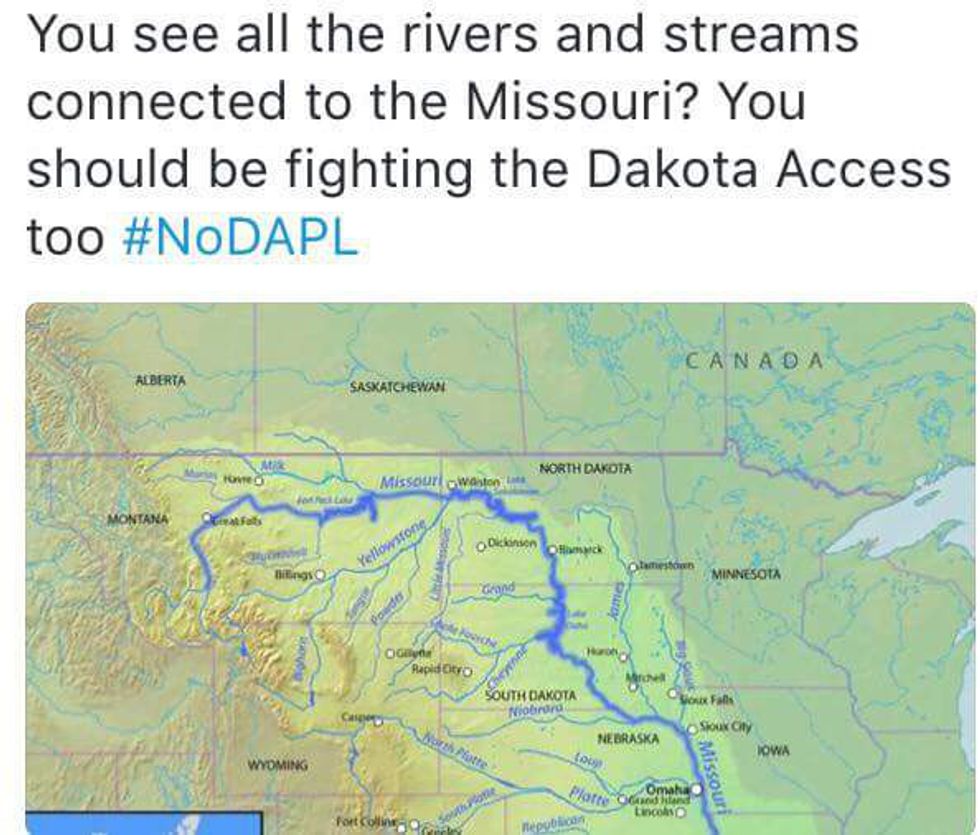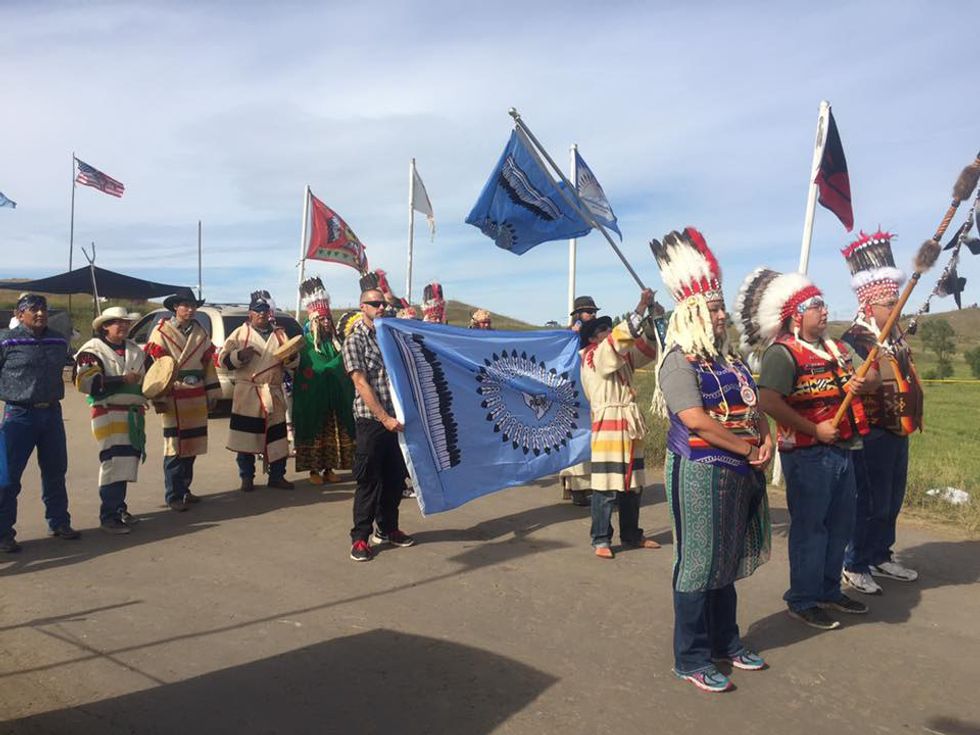The year was 1973. Two hundred Oglala Sioux had gathered in South Dakota at Wounded Knee to protest. They were led by the American Indian Movement (AIM). This was the last time Native American peoples stood up to the U.S. Government in a big way. Now, forty-three years later, it's happening again. Native peoples are once again gathering—in North Dakota—to stand against the government in protest of the Dakota Access Pipeline. The major differences between the two? Rather than "protesters," the Standing Rock people call themselves "protectors," they are unarmed, and they have been joined by members of an estimate 200 other Native American tribes, and a rough estimate of 1,000 people. This is being called the biggest Native American protest/gathering in over a century.
What is the Dakota Access Pipeline?
The Dakota Access Pipeline is supposed to carry crude oil from the Bakken in North Dakota through South Dakota, Iowa, and into Illinois. It will travel through four states. The DAPL was proposed in the hopes that the United States would depend less on foreign countries as our main source of crude oil. That's great, right? Well, it would be except for the few things the U.S. didn't think much about. First of all, the DAPL would run underneath the Missouri River. This is a huge issue with a lot of Americans, especially those who depend on the Missouri as a main water source, because if the Pipeline were to burst, it could contaminate the River AND connected streams. This is a legitimate fear because it happens more often than you think in this country. Second, the Standing Rock tribe fear the pipeline will interfere with their sacred lands, which is originally why this protest began.
What's the big deal?
This is a fair question if you're not very informed. As mentioned above, this pipeline would run UNDERNEATH a major water source in the United States. Everyone should be worried, but for some reason, they aren't. IF the pipeline were to burst, it would contaminate not only the Missouri, but all of the streams that flow from it. This should be everyone's issue.
Why has this become a mainly Native American protest?
I should make something known now: I am not from Standing Rock. I am a part of the Blackfeet Nation, native to Montana/Canada (Blackfoot). These beliefs still stand true for me.
We are called "Natives" for a reason. Our people were here first, our ancestors protected and respected the earth, and they were one with it. Putting a big pipeline full of oil underneath a major water source doesn't exactly mesh with that concept. Our bodies are 75% water. We literally cannot live without it. If the pipeline were to contaminate the Missouri, the Standing Rock tribe, along with a myriad of other people would be searching for a new source of clean water. That is just one issue on a long list.
To name another, the Standing Rock tribe fears that the pipeline construction will ruin sacred grounds. How would people like it if the Government dug up cemeteries where their loved ones were buried? Or demolished the home where their grandparents lived? These sacred grounds have sentimental meanings like that, or stronger, to this tribe. Native peoples keep our traditional ways close to our hearts. They keep us connected to who we are. THIS MATTERS. Digging up a sacred place is a no-go. There's not a negotiation. There's no argument. It just doesn't work that way. No amount of money or goods would suffice to replace our land.
As this protest has progressed, deeper issues have been brought to the surface from centuries past for hundreds of tribes in the United States. The permitting process for the DAPL didn't meet the Standing Rock Sioux's rights as they are seen in past treaties. One only had to pay attention like 5% of the time in History class to know that broken treaties are a trend in U.S. government-tribal relations. This brings hard feelings from tribes across the nation. Is the United States still breaking treaties? Well, history does repeat itself. This is a big "ouch" to Indians everywhere. If the government goes through with the Dakota Access Pipeline, it'll be "just" another broken promise to the tribes of this nation.
That's the truth of this matter. That is why hundreds of tribes have taken the stand with Standing Rock. Native Americans have a common identity that no one else understands. We are one people in the grand scheme. We stand for peace and prosperity, we stand together for what is just. Our traditions are dying out, and we must all fight to preserve what is left. That's why Native peoples have come as far as Alaska and New York to show their support of this matter. They are protectors.
Let's be clear on something.
I am just one voice. I am just one voice from the Blackfeet Nation. I am just one voice in the sea of American Indians. I am just one voice in the United States of America. But everyone has a voice. Use it. Protect our lands. Protect our people. As Americans, this is your issue. As Native Americans, this is your ongoing fight. You don't have to be at Standing Rock to be protecting and protesting this Pipeline. Currently, I'm sitting in my college dorm room, but I'm still protecting and protesting. I'm supporting. I'm making it as clear as day that I am against this pipeline. I stand with Standing Rock. I hope you'll join me.
Disclaimer: That being said, I am still pro-America. I love this country for so many reasons, but my loyalty lies with my Native blood above all else.





















